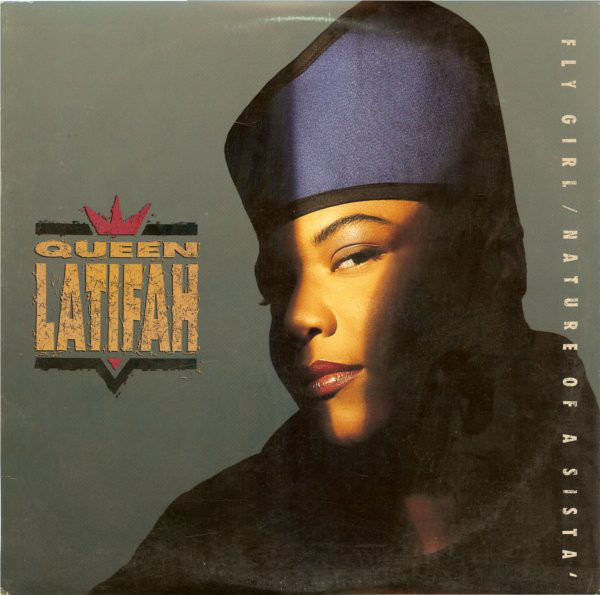
Inspired by the March 18 birthdays of Wilson Pickett, Irene Cara, Queen Latifah, Lykke Li, the Alan Parsons Project’s Eric Woolfson, Vanessa Williams, Sutton Foster and Adam Levine.

Inspired by the March 18 birthdays of Wilson Pickett, Irene Cara, Queen Latifah, Lykke Li, the Alan Parsons Project’s Eric Woolfson, Vanessa Williams, Sutton Foster and Adam Levine.
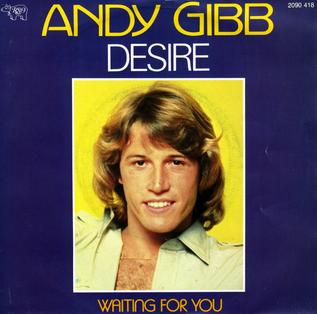
Inspired by the March 5 birthdays of Andy Gibb, The Fall’s Mark E. Smith, Teena Marie, Eddy Grant, Murray Head, Steve Arrington, the Proclaimers, Tommy Tucker and Rex Harrison.
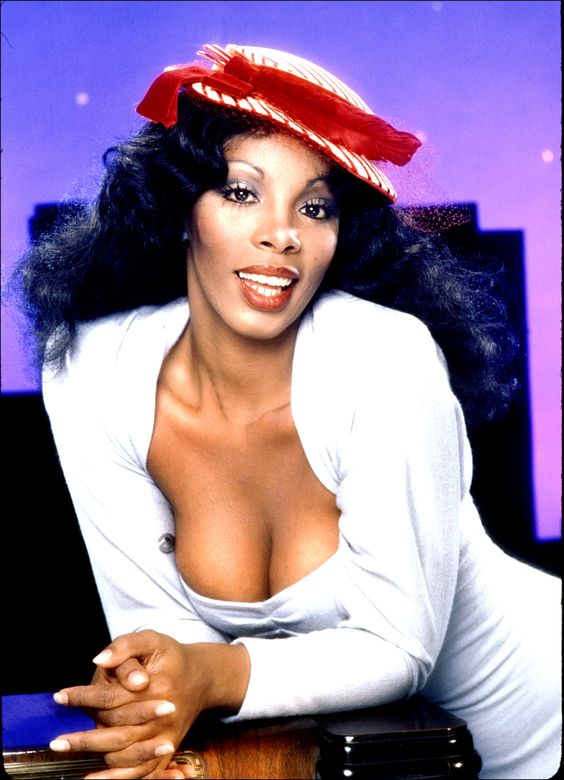
Born LaDonna Gaines in Boston, Massachusetts on the last day of 1948, Donna Summer became a worldwide superstar in the 1970s. She earned the title “The Queen of Disco,” which is accurate and limiting at the same time. Sure, she scored over two dozen top forty hits on Billboard magazine’s Disco/Dance chart; however, her voice and repertoire were not bound by genre, and she placed entries on the Rhythm & Blues and Adult Contemporary charts and has 14 US top ten pop hits to her name.
The first of those pop hits was “Love to Love You Baby,” which reached #2 in 1976. Our playlist begins before that hit, with vocals she provided for a Peter Thomas recording around the beginning of the decade.
Performing musical theater, she joined the cast of a road version of Hair, which brought her to Germany, where she performed in that country’s language. You can hear her German version of “Aquarius” on the YouTube playlist that accompanies this post. (The YouTube playlist encompasses recordings that cannot be found on Spotify at this time.)
Two other significant things happened to LaDonna Gaines in Germany: She married fellow actor Helmut Sommer, and she met producers/songwriters Giorgio Moroder and Pete Bellotte. Moroder and Bellotte signed her to their record label, and the trio began work on her debut album, on which her name was misspelled on the front cover, giving us Donna Summer.
Donna Summer’s debut album, Lady of the Night, produced the singles “The Hostage” and the title track, with the former going to #1 in Belgium and #2 in The Netherlands and the latter cracking the top 40 in Germany as well as being another top five single for her in The Netherlands.
Then came “Love to Love You Baby.” Initially released in The Netherlands as “Love to Love You,” the song was heard by Casablanca Records head Neil Bogart, who suggested they extend the song. The nearly seventeen-minute version was serviced to US clubs in September 1975. Record World magazine’s disco reporter Vince Aletti wrote it sounds “like nothing else I’ve heard before.” Clubgoers shared his enthusiasm, sending the song to #1 on the disco chart for four weeks beginning the month after its release.
While “Love to Love You Baby” was rocketing up the pop chart, Summer’s follow-up became her second #1 disco hit. “Try Me, I Know We Can Make It” is actually four songs: “Try Me,” “I Know,” “We Can Make It,” and “Try Me, I Know We Can Make It.” Those four songs encompassed side one of Summer’s A Love Trilogy album, with side two providing three more top ten disco hits: “Could It Be Magic” (a cover of Barry Manilow’s pop hit from the previous year), “Wasted” and “Come with Me.”
Later in 1976 came yet another album from Summer, Four Seasons of Love. Billboard listed every cut from the album as #1 on the disco chart, where they remained for six weeks. A few months later she released I Remember Yesterday, where once again, all cuts were listed in the #1 position on the disco chart. From that album came the classic “I Feel Love,” about which Brian Eno said to David Bowie “This single is going to change the sound of club music for the next fifteen years.” Bowie agreed.
You may think all this product in quick succession would create a glut from which the public would want a break, but the stats show the exact opposite. Summer’s “Theme from The Deep” (on the YouTube playlist) became a disco hit. “Last Dance” became a disco and pop hit. The double album Once Upon a Time went to #1 on the disco chart (again with all cuts listed). She followed this up with another double album, Live and More (which includes “MacArthur Park” and “Heaven Knows”). Then came another double album, Bad Girls, her commercial and artistic pinnacle.
An interesting piece of trivia for chart geeks: Up to this point every Donna Summer single serviced to dance clubs hit the disco top ten, with her spending 29 weeks at #1 on the chart between 1975 and 1979. Her first entry to make the disco chart but miss its top ten? “Dim All the Lights,” which peaked at #54. Go figure. You may know that song. It performed way better on the pop and rhythm & blues charts.
Let’s pause for a moment and consider not only the quantity of material Summer released and struck gold with. Let’s also look at the quality. These are great records. (Okay, the Live part of Live and More is good, not great.) Disco was predominantly a singles medium, yet Summer cranked out albums that sustained interest throughout. Double albums at that.
A double greatest hits album wrapped up her tenure at Casablanca Records, producing what would be her final #1 on the Disco/Dance Club chart for 15 years, “No More Tears (Enough Is Enough),” a collaboration with Barbra Streisand.
Her star cooled a bit when she released her first post-Casablanca record in 1980. Several factors contributed to this, including the (US) backlash against disco and disparaging remarks attributed to her about gay people, a core and loyal audience until that point. (In 1989 she denied making this comments, saying she would have addressed the controversy earlier but her publicist shielded her from any negative press, so she was unaware. I’m not saying I buy that; I am glad she addressed it.) Also, at the request of her new label’s head, David Geffen, she split with producers Moroder and Bellote following her 1980 album The Wanderer (actually, following that album’s follow-up, I’m a Rainbow, which was shelved until a slim-downed version’s release in 1992).
Despite the dip in popularity, she was far from over. In the eighties she hit the pop top ten with “The Wanderer,” “Love Is In Control (Finger on the Trigger),” “She Works Hard for the Money” and “This Time I Know It’s for Real,” all of which also made the dance top ten. Her pop chart success in the US ended with 1989’s “This Time I Know It’s for Real.”
While she never again hit the US pop top forty, back in the dance clubs she returned to the apex again and again, scoring seven #1s and three additional top tens between 1995 and her death in 2012.
The Donna Summer playlists below include her pop hits, her dance hits, the best non-singles from her studio albums, cuts from compilation albums, songs from soundtrack albums, and some of her guest appearances on other artists’ albums. It may be Labor Day weekend, but Summer never ends at Tunes du Jour!
The YouTube playlist: https://www.youtube.com/playlist?list=PLTkV-h9qkYAyB3JvP5yiWJC6Kf8Lknvc0
Click here to like Tunes du Jour on Facebook!
Follow me on Twitter!
Follow me on Instagram!
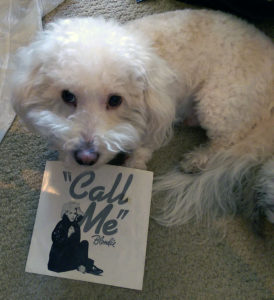
In 1979, Giorgio Moroder, famous mostly for his production work on Donna Summer records, composed the score for the film American Gigolo. He asked Stevie Nicks to sing the movie’s theme song, for which Moroder wrote the music, but she had to decline for contractual reasons. He next turned to Deborah Harry of Blondie.
Harry write the lyrics to the song that became “Call Me,” the second #1 single for her band. Of her experience with Moroder, she told Billboard “He’s very nice to work with, very easy, (but) I don’t think he has a lot of patience with people who fool around or don’t take what they do seriously. I think he’s very serious about what he does and he’s intense and he’s a perfectionist and he’s very talented, so I think that people who are less talented or less concentrated bore him quickly…you really have to pay attention.”
Said Moroder of working with Blondie, “There were always fights. I was supposed to do an album with them after that. We went to the studio, and the guitarist was fighting with the keyboard player. I called their manager and quit.”
Moroder did end up working with Deborah Harry again years later on another soundtrack song, producing “Rush Rush” from Scarface, and in 2004 remixed Blondie’s single “Good Boys.”
Tunes du Jour’s Throwback Thursday playlist this week spotlights the best of 1980, kicking off with Blondie’s “Call Me.”
Click here to like Tunes du Jour on Facebook!
Follow me on Twitter: @TunesDuJour
Follow me on Instagram: @GlennSchwartz
Let’s hear it for the ladies! You know the ones.
[8tracks width=”300″ height=”250″ playops=”” url=”http://8tracks.com/mixes/7838521″]
Click here to like Tunes du Jour on Facebook!
Follow me on Twitter: @TunesDuJour

The world lost another great music artist this week when Maurice White, founder of Earth, Wind & Fire, passed away from the effects of Parkinson ’s disease at age 74.
Formed in 1969, Earth, Wind & Fire have sold over 90 million records; been nominated for 17 Grammy Awards, winning six; been nominated for 12 American Music Awards, winning Favorite Soul, R&B Band, Duo or Group in 1975, 1976, 1977, 1978 and 1980; were inducted into the Rock and Roll Hall of Fame; won the Rhythm & Soul Heritage Award from the American Society of Composers and Publishers; won a Lifetime Achievement Awards from the BET Awards; received a star on the Hollywood Walk of Fame; were inducted into the NAACP Hall of Fame; won the Soul Train Music Awards’ Legend Award; became the first African-American performers to receive the Columbia Records Crystal Globe Award for selling more than five million albums outside the United States; and became the first African-American act to sell out Madison Square Garden.
Outside of Earth, Wind & Fire’s nominations, Maurice White received an additional four Grammy nominations, winning one. He was inducted into the Songwriters Hall of Fame. As a producer, songwriter, vocalist or musician, he has worked on records by Weather Report, Barbra Streisand, Cher, Neil Diamond, Minnie Riperton, The Emotions, Ramsey Lewis, The Tubes, Barry Manilow, Deniece Williams, Atlantic Starr and Jennifer Holliday.
Earth, Wind & Fire scored seven platinum-certified albums, with 16 top 40 albums on the pop chart and 23 top 40 albums on the r&b chart. They’ve had 16 top 40 pop singles and 38 top 40 r&b singles. Many of their best-known songs are ballads – “That’s the Way of the World,” “After the Love Has Gone,” and “Reasons” among them – but Friday is dance day at Tunes du Jour, so today’s playlist will focus on the group’s uptempo work, with tracks co-produced by White for The Emotions and Deniece Williams thrown in.
Click here to like Tunes du Jour on Facebook!
Follow me on Twitter: @TunesDuJour

Today is my birthday. Over my 25+ years on earth, I’ve learned many life lessons. Most of them came from songs. My birthday gift to you is a playlist of 100 songs offering advice as to what not to do.
Click here to like TunesDuJour on Facebook!
Follow me on Twitter: @TunesDuJour
This week’s installment of A Hint of Mint consists of cover songs. It’s likely you are familiar with most or all of the songs on this week’s playlist, but I’m guessing you are not familiar with the versions presented here. Drawn primarily from soundtracks, compilations and CD singles, here are twenty remakes of popular tunes, performed by members of the LGBTQQISA populations. Included are Tegan & Sara covering Bruce Springsteen, Antony & the Johnsons covering Beyoncé, and Pansy Division covering Johnny Cash and June Carter.
Happy Sunday!
[8tracks width=”300″ height=”250″ playops=”” url=”http://8tracks.com/mixes/7046970″]
Click here to like Tunes du Jour on Facebook!
Follow me on Twitter: @TunesDuJour
1. She was born Ellen Naomi Cohen on September 19, 1941. Per bandmate Denny Doherty, she may have chosen the new first name Cass after actress Peggy Cass. She later assumed the surname Elliot in memory of a deceased friend. In 1965 she became Mama Cass after joining The Mamas & the Papas. In 1971 she became Baroness von Wiedenman, when she married Baron Donald von Wiedenman. The marriage lasted just six months.
2. Prior to marrying the baron, Cass married James Hendricks, a bandmate of her pre-Mamas and the Papas groups The Big Three and The Mugwumps, to help him avoid being drafted into the Army during the Vietnam War. The marriage wasn’t consummated and later was annulled.
3. Cass dropped out of high school her senior year. She moved to New York City to pursue an acting career. She toured with a production of The Music Man. In 1962 she went for the part of Miss Marmelstein in I Can Get It for You Wholesale, but lost out to Barbra Streisand.
4. She reportedly had an IQ of 165.
5. The Mamas and Papas’ John Phillips was reluctant to let Cass join the group, because of her size and because she couldn’t hit the high notes. While walking past a construction site, a metal pipe fell and conked Cass on the head, knocking her to the ground. She spent three days in the hospital with a concussion. After being released, she joined the group at one of their rehearsals and amazingly, was able to hit the high notes. Phillips then made her a member of the group.
6. Per writer Julia Phillips, Mama Cass owed the IRS $10,000, which she paid via a truckload of pennies. The government cited her for contempt.
7. She was attributed with the following quote: “I would say the world’s in terrible shape, but I’m afraid the world would say, ‘Look who’s talking.’”
8. In 1967 Cass posed nude for Cheetah magazine.
9. On July 29, 1974, following two sold-out concerts at The London Palladium, Cass retired to her hotel room. That night she died in her sleep of heart failure.
10. She died in room no. 12 at 9 Curzon Place in London. Four years later, The Who’s drummer Keith Moon died in the same room.
Tunes du Jour remembers Mama Cass Elliott on her birthday with this twenty-track playlist.
Click here to like Tunes du Jour on Facebook!
Follow me on Twitter: @TunesDuJour
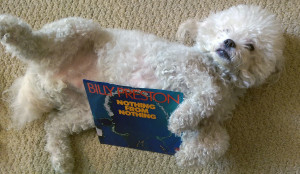
Today is the birthday of the late, great Billy Preston. You may be familiar with his #1 hits “Will It Go Round in Circles” and “Nothing from Nothing.” Preston has many more accomplishments on his resume. Here are ten things you may not know about him:
1. He is the only person to be given a featuring credit on a Beatles single. The #1 smash “Get Back” and its b-side, “Don’t Let Me Down,” also a top 40 hit, were credited to The Beatles with Billy Preston. He also played on the band’s Abbey Road, Let It Be and self-titled albums (the latter often referred to as The White Album) and in their famous final rooftop concert. At one point John Lennon suggested having Preston become one of The Beatles.
2. He played on several albums by The Rolling Stones, including Exile on Main Street, Sticky Fingers, Tattoo You, It’s Only Rock‘n Roll and Goats Head Soup.
3. In 1958, twelve-year-old Preston played “Father of the Blues” W.C. Handy as a child in the Handy biopic St. Louis Blues.
4. At age 15 Preston joined Little Richard’s band.
5. In 1967 Preston joined Ray Charles’ band.
6. He played on Sam Cooke’s final studio album, the critically-acclaimed Night Beat. Preston was 16 years old at the time.
7. Other artists on whose records Preston played include Barbra Streisand, Elton John, Peter Frampton, Eric Clapton, MeShell NdegéOcello, Joni Mitchell, Jet, Neil Diamond, Sly & the Family Stone, Aretha Franklin, Red Hot Chili Peppers, Luther Vandross, the Everly Brothers, and Johnny Cash.
8. Preston co-wrote “You Are So Beautiful,” a top five single for Joe Cocker in 1975.
9. It has been written that Stephen Stills got the expression “If you can’t be with the one you love, love the one you’re with” from Preston. (Some reports say it was Doris Troy who gave Stills that phrase.)
10. George Harrison wrote and co-produced “My Sweet Lord” for Preston. It appeared on Billy’s 1970 Encouraging Words album, released on The Beatles’ Apple Records. Harrison went on to record his own version of the song for his All Things Must Pass album, on which Preston played. Perhaps you’ve heard the Harrison version.
11. Preston introduced George Harrison to a woman named Olivia Arias, who worked at A&M Records, for whom Billy recorded after he left Apple. Arias soon became Olivia Harrison.
12. So impressed by Preston’s music was Miles Davis that the jazz legend recorded a song called “Billy Preston” for his 1974 album Get Up With It.
13. Preston’s primary instrument was the organ. The first time he played the clavinet was on his hit “Outa-Space,” which reached #2 on the pop charts. The first time he played the Arp synthesizer was on his hit “Space Race,” which reached #4 on the pop chart.
14. Preston’s singles “Will It Go Round in Circles,” “Nothing from Nothing,” “Outa-Space” and “Space Race” each sold over one million copies in the United States alone.
15. As a solo artist Preston had ten top 40 hits on Billboard’s R&B chart.
16. Preston played Sgt. Pepper in the ill begotten film Sgt. Pepper’s Lonely Hearts Club Band, one of my favorite bad movies. In the film he sings “Get Back” to Billy Shears, played by Peter Frampton, just after Shears jumped off of a roof to kill himself. Perhaps I should have written SPOILER ALERT, but you can’t spoil something that stinks to begin with.
17. In 1972 Preston became the first rock performer to headline at New York’s Radio City Music Hall.
18. Preston was a musical guest on the first episode of Saturday Night Live.
19. Preston started playing piano and singing church. About being gay in the church, Preston told writer David Ritz “In the community outside the church, gay men were called sissies. There was zero tolerance. But inside the church, a lot of music was created by gay men. It was almost a tradition. Everyone knew that my mentor James Cleveland, who became the King of Gospel, was gay….So many of the other major figures – like Professor J. Earle Hines out of Los Angeles and Professor Alex Bradford out of Chicago – were gay. Mahalia [Jackson] surrounded herself with gay men her entire life. In the neighborhood they made you ashamed of being gay, but in the church you were almost proud to be part of the gay elite of musicians.”
20. Preston died on June 6, 2006, from complications from malignant hypertension. He was 59 years old.
Here are twenty of the many highlights of Billy Preston’s recording career:
Click here to like Tunes du Jour on Facebook!
Follow me on Twitter: @TunesDuJour